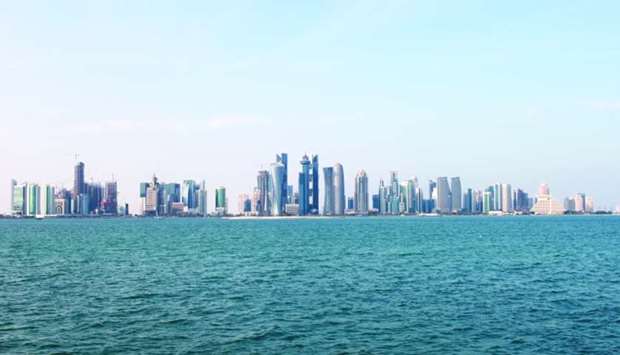Qatar will be able to maintain its current account surplus in 2020-21, Economist Intelligence Unit (EIU) has said and noted QIA's assets provide strong support for the currency peg to the US dollar.
In its latest overview on Qatar, EIU said the threat of capital outflows in the wake of the blockade on Qatar, imposed in June 2017 by a quartet of Arab countries, has “largely subsided with the recovery and subsequent stabilisation of foreign reserves and the return to a current-account surplus in 2017.”
Qatar’s “ample” foreign reserves and the assets of the Qatar Investment Authority (QIA, the sovereign wealth fund), which were worth $335bn in July, were taken into account by EIU to give the country ‘BBB’ sovereign rating.
It said Qatar’s banking sector is supported by a “strong regulatory framework and solid capital and liquidity indicators.”
“Commercial banks have been increasing liquidity from abroad in the form of a number of debt issues, and cash injections from the QIA have further bolstered their liquidity,” EIU noted and rated the country’s banking sector risk at ‘BB’.
Terming Qatar’s “sound” financial system as “supportive”, EIU said the country's high stock of public debt, however, weighs on the outlook.
The economic structure risk is B-rated. Qatar's overdependence on hydrocarbons exports generates some economic risk. Efforts to promote economic diversification will be “hampered” by the ongoing blockade, it said.
EIU said Qatar’s real economic growth will remain stable throughout most of the long-term forecast period. However, economic diversification investment projects will sustain robust growth until 2030, before slowing thereafter.
“There remains potential for bursts of high growth if further gas export projects, beyond those planned for the mid-2020s, are approved by the government. Diversification and the expansion of the services sector, funded by the state's hydrocarbons wealth, will also provide opportunities for growth. The population will continue to increase, largely through immigration, to 3.9mn in 2050. As a result, growth in real GDP per head will be much slower than growth in real GDP,” it said.
Qatar’s “ample” foreign reserves and the assets of the Qatar Investment Authority (QIA, the sovereign wealth fund), which were worth $335bn in July, were taken into account by EIU to give the country ‘BBB’ sovereign rating.
It said Qatar’s banking sector is supported by a “strong regulatory framework and solid capital and liquidity indicators.”
“Commercial banks have been increasing liquidity from abroad in the form of a number of debt issues, and cash injections from the QIA have further bolstered their liquidity,” EIU noted and rated the country’s banking sector risk at ‘BB’.
Terming Qatar’s “sound” financial system as “supportive”, EIU said the country's high stock of public debt, however, weighs on the outlook.
The economic structure risk is B-rated. Qatar's overdependence on hydrocarbons exports generates some economic risk. Efforts to promote economic diversification will be “hampered” by the ongoing blockade, it said.
EIU said Qatar’s real economic growth will remain stable throughout most of the long-term forecast period. However, economic diversification investment projects will sustain robust growth until 2030, before slowing thereafter.
“There remains potential for bursts of high growth if further gas export projects, beyond those planned for the mid-2020s, are approved by the government. Diversification and the expansion of the services sector, funded by the state's hydrocarbons wealth, will also provide opportunities for growth. The population will continue to increase, largely through immigration, to 3.9mn in 2050. As a result, growth in real GDP per head will be much slower than growth in real GDP,” it said.


